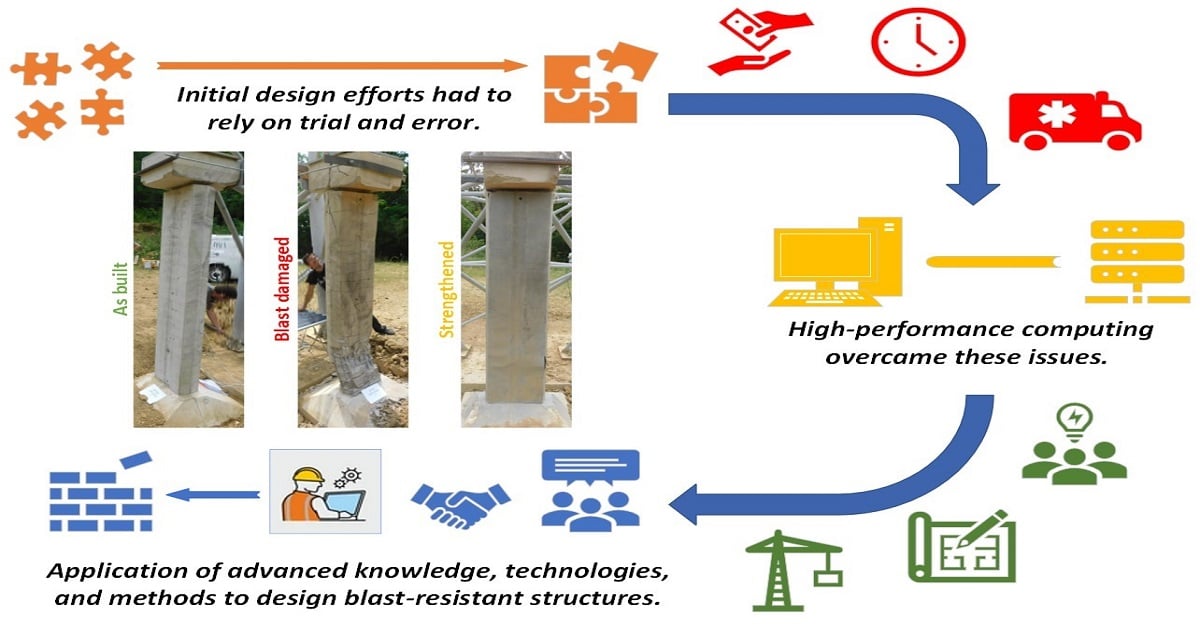Structural Performance in Blast Load Scenarios
A special issue of Buildings (ISSN 2075-5309). This special issue belongs to the section "Building Structures".
Deadline for manuscript submissions: closed (28 February 2025) | Viewed by 4684

Special Issue Editors
Interests: reinforce concrete structures; bridges; blast load; numerical modeling; experimental testing; optical measurements; digital image correlation; seismic load
Interests: reinforce concrete structures; timber structures; composite structures; static analysis; blast load; numerical modeling; experimental testing
Interests: structural modeling and analysis; data-driven modeling; experimental analysis; earthquake engineering; blast engineering; masonry structures; reinforced concrete structures
Special Issue Information
Dear Colleagues,
There is an ever-present need for reliable and pragmatic engineering tools for blast-load assessments and the mitigation design of military and civilian structures. This need dictates the knowledge of primary blast load parameters and their influence on structural components. Initial design efforts had to rely on trial-and-error techniques to determine the best design for particular blast scenarios, which was, in the majority of cases, expensive in terms of time, money, and human lives. Technological advancements enabled us to overcome these issues with the development of high-performance computing that made it possible to perform virtual blast load simulations on numerous versions of blast scenarios. Engineers can experimentally test structural components based on simulation results with reduced danger to their safety and, ultimately, the safety of end users.
This Special Issue is being organized to share the advanced knowledge, technologies, and methods for blast-resistant structures and design based on advanced tools, where authors are encouraged to submit papers addressing topics including but not limited to the following:
(1) Blast loading on structures and structural elements;
(2) Experimental methods for blast load parameter measurements;
(3) Experimental investigation on the blast load influence on structures and structural elements;
(4) Numerical investigation of blast load parameters and influences on structures and structural elements;
(5) Blast load-induced ground vibrations and their influence on structures;
(6) Seismic performance of structures as a potential blast load mitigation design;
(7) Innovative materials and design procedures for blast load mitigation;
(8) Structural strengthening for blast load mitigation.
Dr. Hrvoje Draganić
Dr. Mario Jeleč
Dr. Goran Gazić
Guest Editors
Manuscript Submission Information
Manuscripts should be submitted online at www.mdpi.com by registering and logging in to this website. Once you are registered, click here to go to the submission form. Manuscripts can be submitted until the deadline. All submissions that pass pre-check are peer-reviewed. Accepted papers will be published continuously in the journal (as soon as accepted) and will be listed together on the special issue website. Research articles, review articles as well as short communications are invited. For planned papers, a title and short abstract (about 100 words) can be sent to the Editorial Office for announcement on this website.
Submitted manuscripts should not have been published previously, nor be under consideration for publication elsewhere (except conference proceedings papers). All manuscripts are thoroughly refereed through a single-blind peer-review process. A guide for authors and other relevant information for submission of manuscripts is available on the Instructions for Authors page. Buildings is an international peer-reviewed open access semimonthly journal published by MDPI.
Please visit the Instructions for Authors page before submitting a manuscript. The Article Processing Charge (APC) for publication in this open access journal is 2600 CHF (Swiss Francs). Submitted papers should be well formatted and use good English. Authors may use MDPI's English editing service prior to publication or during author revisions.
Keywords
- blast loading
- blast wave parameters
- blast pressure measurements
- blast-induced vibrations
- blast-induced ground vibrations
- blast-induced damage
- experimental testing
- numerical modeling
- assessment techniques
- RC structures
- masonry structures
- composite structures
- blast mitigation
- structural strengthening
- innovative blast load mitigation systems and materials
Benefits of Publishing in a Special Issue
- Ease of navigation: Grouping papers by topic helps scholars navigate broad scope journals more efficiently.
- Greater discoverability: Special Issues support the reach and impact of scientific research. Articles in Special Issues are more discoverable and cited more frequently.
- Expansion of research network: Special Issues facilitate connections among authors, fostering scientific collaborations.
- External promotion: Articles in Special Issues are often promoted through the journal's social media, increasing their visibility.
- e-Book format: Special Issues with more than 10 articles can be published as dedicated e-books, ensuring wide and rapid dissemination.
Further information on MDPI's Special Issue policies can be found here.







